There are few destinations I fish regularly that excite me as much as the thought of spending a day or two on the Aire River. Nestled in the shadows of the Otway Ranges, the river is surrounded by unspoilt, natural beauty that few other angling locations in the region can rival.
The Aire River begins life as a series of small trickles high in the Otways that are inaccessible to kayak anglers due to being laden with logjams, rapids and shallow pools. However, as the river nears the coast it grows dramatically in size to be perfectly suited to kayaks and other small craft.
Located to the west of Cape Otway, the Aire River is best accessed via the two camping grounds located towards the mouth of the system. The camping grounds (creatively known as Aire River East and Aire River West) are excellent and provide anglers with the perfect place to roll out a swag or pitch a tent. Facilities include non-flush toilets, picnic shelters, shared picnic tables and fireplaces.
Aire River West Campground, the larger of the two, offers anglers a small gravel ramp and jetty, the ideal spot to launch a kayak. There are also two small gravel ramps on the eastern bank either side of the road bridge that connects the two camping grounds. The camping grounds can be accessed via a dirt track that connects with Hordern Vale Road in Hordern Vale on the Great Ocean Road, approximately 30-minutes drive west of Apollo Bay.
One of the major draw cards to fishing the Aire River is that it is one of only a handful of systems where kayak anglers can target both estuary and freshwater species without having to paddle huge distances. Bream are a mainstay for those who regularly fish the Aire River, however at certain times of year wild sea run trout make their way into the brackish waters and become a viable option. Although not a common catch, estuary perch are not unheard of and make for a more than welcome by-catch.
The main features in the lower reaches of the Aire are reed edges, common among many systems in the south west of Victoria. Working these edges can be highly productive, particularly when targeting bream during the warmer months. Grub pattern soft plastics are my go-to for fishing this type of terrain – they’re less likely to snag up on the reeds and can be cast right to the edges and allowed to drop vertically. Position your kayak close to the reed edges and cast your grub upstream, landing it tight up against the reeds. Work your grub back with the flow to increase your strike rate by presenting a more natural offering that moves with the flow. Work your grub back to the kayak using a hop and pause retrieve, and try to keep your plastic as close to the edge as possible. Always be on the lookout for reeds growing out over the water, and skip cast your grub in under the overhang, as often bigger bream will use these shaded areas as cover. It pays to be fully attentive from the moment your grub breaks the surface tension, bream regularly take grubs as they fall vertically down through the water column. As the water cools, the edges become less productive, so move your casts out away from the edges and work the deeper water and drop-offs. A good quality sounder can be invaluable for locating bream.
The ever faithful ZMan Grubz in motor oil rigged on a 1/16-1/20oz jighead is hard to go past, although more recently I have experimented with smaller grubs, particularly the Strike Pro Enticer 2” grubs rigged on 1/20-1/32oz jighead. The smaller grubs tend to work on the days when fish seem shutdown or finicky.
As I mentioned earlier, during winter searun brown trout return to the river to spawn. Unlike the tiny wild browns that inhabit the high reaches of the Aire, these fish are considerably larger with units in the 2-3kg range not uncommon. By far the most productive method to target trout in the Aire is to troll lures along the weed edges around the Great Ocean Road Bridge or in the three small lakes, Lake Craven, Lake Costin and Lake Hordern. The Ford River, which flows into the Aire is also worth a look when chasing trout. Slim profile shallow to mid-diving hardbodied lures such as Daiwa Double Clutches 60 & 75s and Nories Laydown Minnows have worked well for me in the past. Better colours include, but aren’t limited to, black, golds and brown trout patterns.
Although the Aire fishes well for bream all year round, I find myself spending more time there during the cooler months, for the simple fact that it is during winter that the big sea run brown trout make their presence felt. The river always fishes well during periods of high flow, if you can time your visit to coincide with the period immediately after the river mouth opening you should be in for plenty of action.
| As always, when fishing from your yak ensure you have all the necessary safety gear as required by Victorian law, including a serviced PFD and bailer. It is important to note that the Aire River is reasonably remote and as a result phone service is unreliable. If you’re flying solo make sure you let someone know your plans. Finally, strong currents can occur | in the Aire River immediately after the mouth opens, so avoid this area during these conditions or you’ll risk an unplanned trip to Tassie. |
|---|
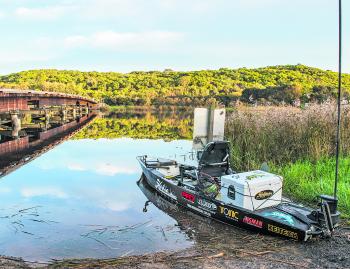
The Aire River is unbeaten for surrounding natural beauty – grab your yak and hit the stretches of gorgeous waterway!
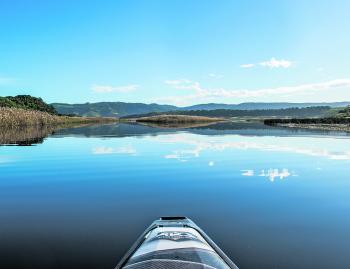
The main features in the lower reaches of the Aire are reed edges, common among many systems in the south west of Victoria. Working these edges can be highly productive, particularly when targeting bream during the warmer months.
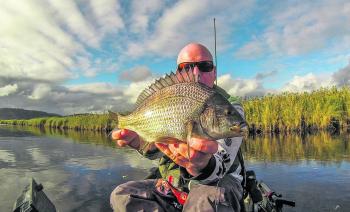
The Aire fishes well for bream all year round.
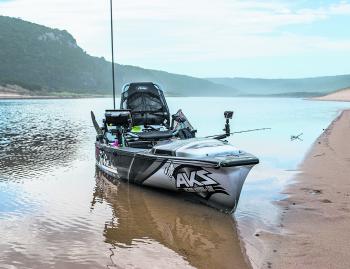
One of the major draw cards to fishing the Aire River is that it is one of only a handful of systems where kayak anglers can target both estuary and freshwater species without having to paddle huge distances.
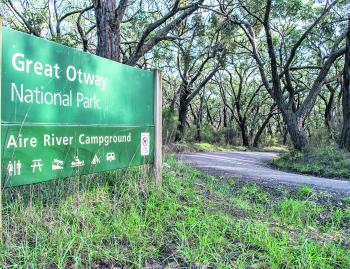
The Aire can be accessed through two fantastic campgrounds that offer a wide range of facilities to visitors.




